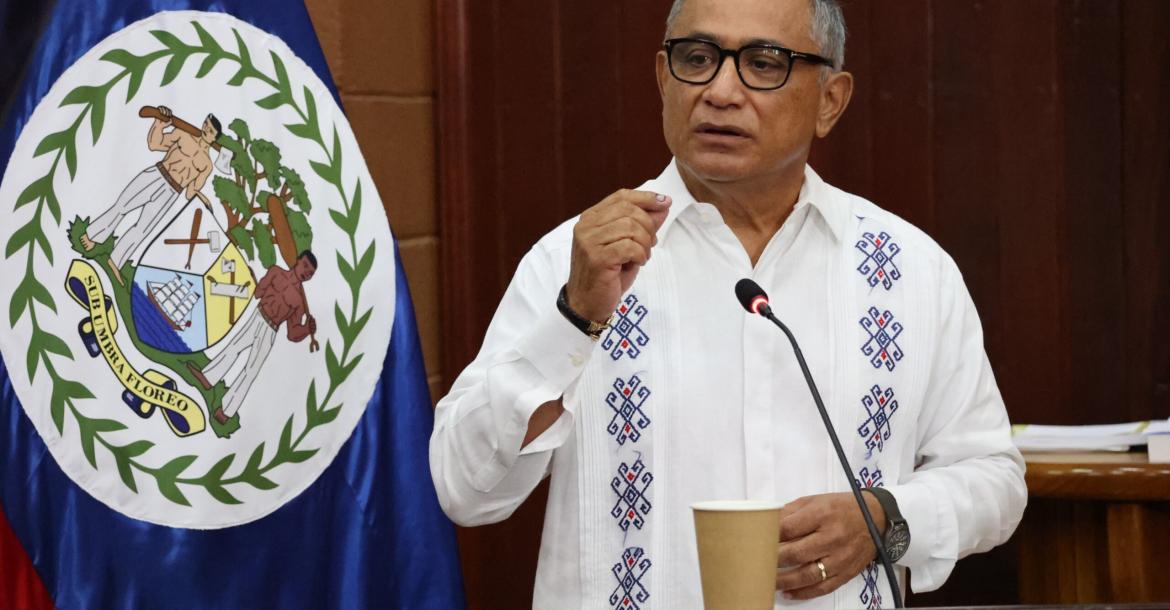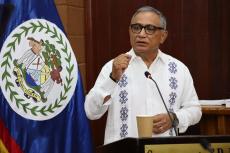Diplomatic Calls and Empty Hands: Briceño’s Bid for Relevance and the Realities Behind the Zaragoza Bridge Concept
By: Omar Silva I Editor/Publisher
National Perspective Bz | Belize–Mexico Relations
Belize City: Thursday 15th May 2025
In a time of rising national unease, economic stagnation, and political disillusionment, Prime Minister John Briceño has reached for the international phone lines once again—this time to Mexico’s newly elected President Claudia Sheinbaum. But while the Belizean government heralded the call as “strengthening bilateral ties,” Belizeans are increasingly skeptical of what these fleeting moments of diplomacy truly offer—beyond photo ops and press releases.
The official narrative of the call paints a picture of renewed cooperation between Belize and Mexico, featuring talks on energy, security, trade, the extension of the Tren Maya, and most notably, the revival of the Zaragoza Bridge concept—a proposed infrastructural link connecting the northern tip of Ambergris Caye to the Mexican state of Quintana Roo.
At first glance, this may appear to be the beginning of a “new era” in regional connectivity. But on closer inspection, it exposes a persistent and troubling pattern: Belize arrives at every regional conversation empty-handed, seeking favors instead of presenting mutually beneficial initiatives.
The Energy Illusion
Among the most urgent topics discussed was Belize’s ongoing dependence on Mexico for electricity. This has been the case for decades, yet no administration—red or blue—has shown serious political will to invest in sovereign, sustainable energy solutions for Belize.
Now, even as the Mexican state of Quintana Roo faces its own surging demand and infrastructure challenges, Belize continues to beg for surplus supply. This is not diplomacy—it’s dependency, masquerading as partnership.
Security Cooperation, but at What Depth?
Security ties between Belize and Mexico have indeed strengthened in recent years. Belizean personnel have received training and support from their Mexican counterparts. Yet, this does little to address Belize's internal policing failures, nor the regional threat posed by organized crime and trafficking networks operating at or near our porous borders.
Diplomatic calls and handshakes will not solve these structural deficits without a holistic and actionable Belizean security plan—something still glaringly absent.
Trade Smoke and Mirrors
Belize’s Prime Minister raised the topic of greater market access for Belizean cattle and coconuts into Mexico. But this is hardly new. Belize has long exported both commodities to Mexico and Guatemala, often leaving domestic consumers to grapple with inflated prices and local shortages.
Instead of expanding trade in ways that reduce costs and improve livelihoods at home, Belizean officials seem content to sell what little we have abroad—without ensuring food security or fair domestic supply.
Tren Maya and the Bridge to Nowhere
Perhaps the most aspirational—but also the most delusional—topic broached was the potential expansion of the Tren Maya into Belize. A revolutionary Mexican transport project aiming to boost tourism and economic mobility across the Yucatán, the Tren Maya is an emblem of Mexico’s state-led development model.
For Belize, it is a dream for which we have no track, no funding, and no concrete plan to offer in return. Belize contributes no tangible counterpart investment. No rail infrastructure. No logistics hub. No industrial zones to justify connection. Only words.
Zaragoza Bridge: A Symbol of Hope or a Hallucination of Dependency?
The final flourish of the diplomatic conversation—the Zaragoza Bridge—speaks volumes about Belize’s current strategy: wait and hope that Mexico will pay for our connectivity.
While the concept has been floated for years, its construction would require crossing the Bacalar Chico Marine Reserve, part of a UNESCO World Heritage Site rich in mangroves, sea turtles, jaguars, and marine biodiversity. Environmentalists have already raised alarm bells over the potential damage to these ecosystems, which could include:
- Disruption of jaguar and ocelot habitats,
- Mangrove removal essential for coastal protection,
- Threats to sea turtle nesting grounds,
- Increased unregulated human activity in protected zones.
Despite these valid concerns, Belize has yet to produce a single environmental impact assessment (EIA), public consultation process, or feasibility study. Nor has it proposed a financial model or local community plan to make the project sustainable.
Instead, we rely once again on Mexico’s generosity, reducing a grand bi-national vision to a one-sided hope that Mexico will fund, design, and build the bridge—with Belize simply waiting to cut the ribbon.
Conclusion: Belize's Diplomacy of Dependency Must End
From the MCC grant now lost, to begging for energy, to daydreaming about railroads and bridges we cannot build—Belize’s foreign policy is no longer about shaping our future. It’s about surviving on borrowed relevance.
Prime Minister Briceño may believe that these international calls uplift his stature. But the Belizean people are no longer impressed by staged diplomacy or empty announcements. We need real transformation—not bridge-building in the air, but nation-building at home.
Until Belize shows up at the table with real plans, real investments, and real solutions, we will remain a passenger in the region—grateful for the ride, but never steering the wheel.
- Log in to post comments




